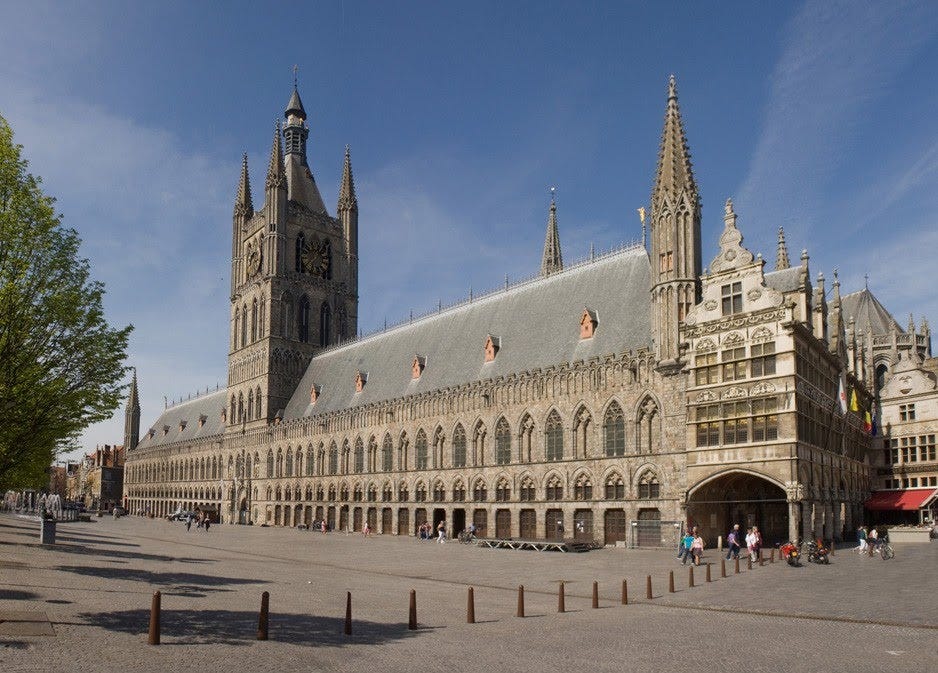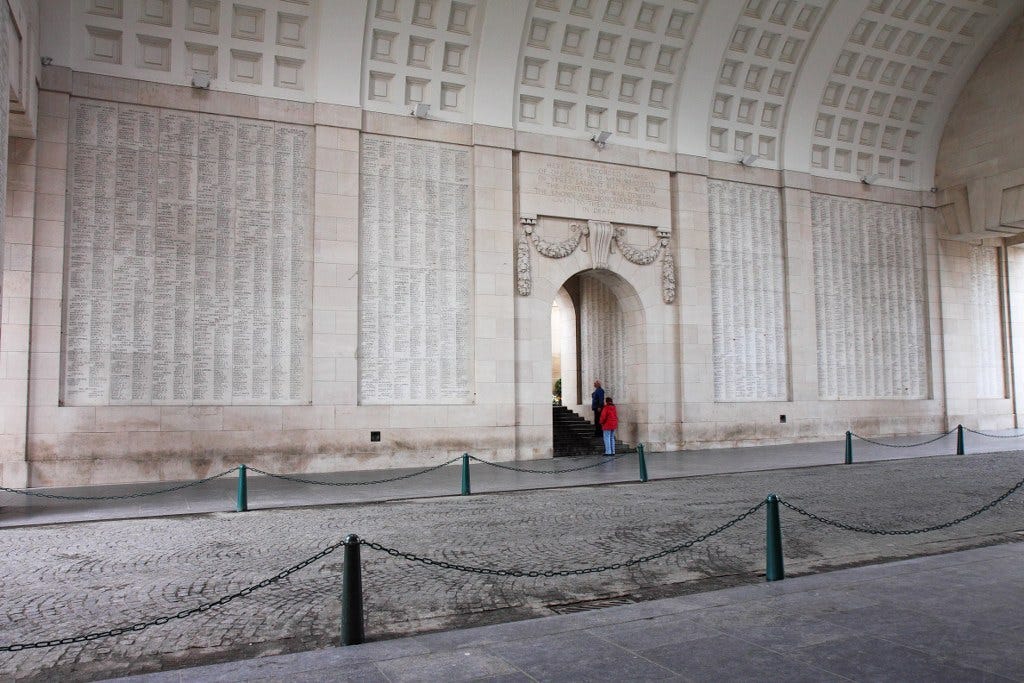Hola Global Jigsaw Friends,
Last week I brought you a piece about an Indian brigadeer who volunteered to fight in the international brigades during the Spanish Civil War. This week, it’s a similar, but simultaneously very different piece about the Indians who fought as part of the British army during the World War 1, in particular during the Battle of Ypres. Rather than a single battle, this was in fact series of engagements near the Belgian city of Ieper/Ypres, between the German and the Allied armies. During the five engagements, casualties may have surpassed one million.
*****
Around 7,000 Indian soldiers died in the battles in and around the town of Ypres during the First World War. Of these, the names and histories of only 413 are known. The rest lie in unmarked graves all over the Flemish countryside. I visited the town almost a decade ago, to try and track down some information on them.
Graves and bunkers were strewn around the fields that spread out from the Flemish town of Ieper (known as Ypres in French – I will use the names interchangeably). They glinted in the chilly, spring sunlight like discarded candy wrappings. The vistas were seemingly empty, but for the presence of hundreds of thousands of ghosts.
In the First World War the countryside around was transformed into a sea of gore as the town became the centre of intense and sustained battles between the German and Allied forces. The town was strategically located in the path of Germany’s planned sweep across Belgium and into France. Ypres was all but obliterated in the course.
Today it has been painstakingly reconstructed into a site of pilgrimage for peoples from across Europe, a symbol of the hubris of war and a monument to remembrance. An inventive museum housed in the town’s rebuilt “cloth hall” – the region was a centre of the medieval trade in textiles - is one of the means by which Ieper attempts to ensure that the horrors of the War are not forgotten.
In Flanders fields Museum
The museum was a few minutes walk from the Menin Gate, a commemorative arch in which the names of almost 55,000 soldiers, whose graves remain unknown, were inscribed. Designed by British architect Reginald Blomfield, a contemporary of Edward Lutyens, it is widely held to be the model for Delhi’s India Gate.
Amongst the thousands of names running up the walls of the memorial were those of 413 members of the Indian Army Corps who’d gone missing in the Ieper Salient. But according to Dominiek Dendooven a historian with the Ieper Museum this was only a fraction of the true numbers of Indian soldiers who lost their lives here.
Inscriptions inside the Menin Gate
He recounted as an example how on April 26, 1915, 440 men of the 47th Sikh infantry regiment went into battle, of whom 348 were lost. “But we only have 14 of their names inscribed on the Menin Gate. The rest have vanished from history.”
For Dendooven, Ieper’s function as a memorial to the First World War remained flawed. “The history of the war as is commonly understood here is a very Eurocentric history, but in fact more than 50 non-European cultures were involved,” the result of the use of colonial troops by the British and French.
Thus, even as Ypres serves as an imperative to “remember,” many tens of thousands are forgotten, amongst them the up to 7,000 Indian troops who died in and around the area. You have to search hard to find traces of their unsung stories amidst the debris of material remains from the time.
In a corner of Bedford House cemetery, one of the larger memorial parks in the vicinity, a cluster of 20-odd head stones marked a separate “Indian area”. The majority bore no name. Instead, only a terse, desolate sentence: “An Indian soldier of the Great War.”
How old was this soldier? Did that one have a wife waiting back home? Did he screw up his nose when he laughed? The stones stared back blankly, holding their secrets within. They sat apart from the rest of the cemetery ensuring that in death, as in life, the men they commemorate remained “other” to the colonial masters they fought for.





